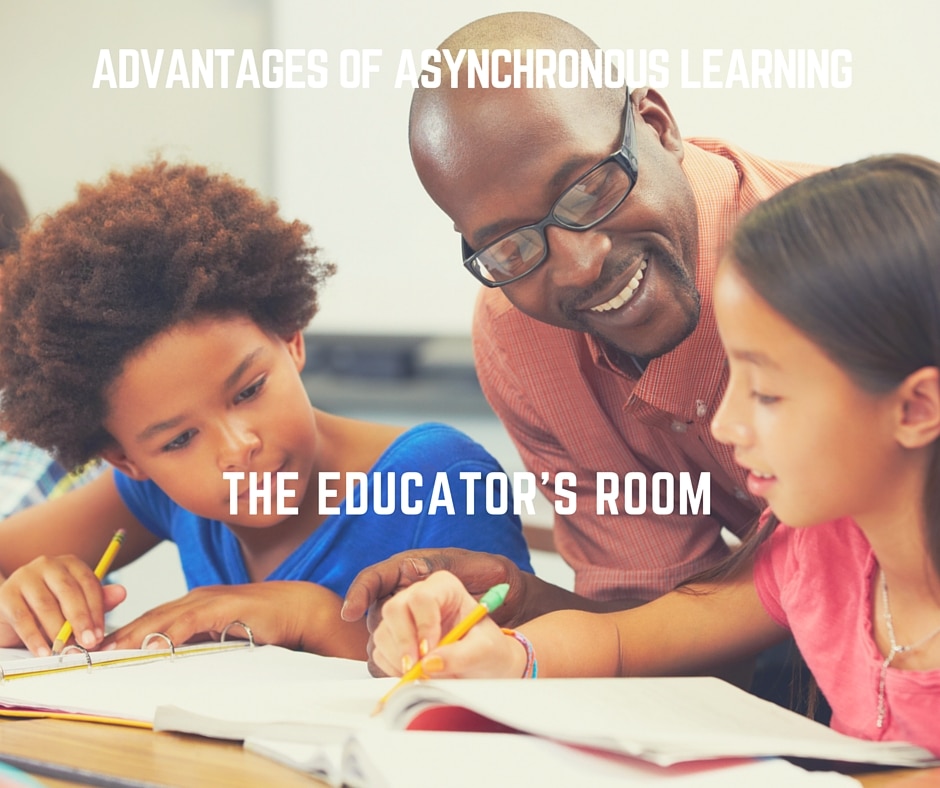The traditional model of classroom learning usually revolves around whole-class pacing. Asynchronous learning means students learn at their own individual pace – often in a learning for mastery model. In traditional classrooms, assignments are all due on the same day for all students, units are planned to last a set amount of days or weeks, and assessments are given to the whole class at the same time, no matter if it takes some students longer to learn concepts than others. Some teachers have generous late policies, others do not. More often than not, students are punished in the form of docked points or even failing grades for work turned in late. We often argue that part of student responsibility and organization is to meet set due dates. A high school teacher myself, I used to follow these same practices – it is the way teachers are taught to manage a classroom. And it is the way it has always been done, probably for several reasons: it is easier to organize a classroom around a set calendar; and with older students, scaling assignments and grading to the large number of students that middle and high school teachers deal with is always a challenge. It wasn’t until I started teaching in a digital environment in a program that is completely asynchronous that I began to see how students learning at their own individual pace can have a motivating and empowering impact on their learning. It is a radical way to teach, and can be difficult to implement when the pressure is with the traditional, synchronous method, but my experience transitioning to asynchronous teaching has opened my eyes to a fantastic way to work with my students.
A digital environment is arguably more conducive to asynchronous learning because students are often already working independently, and pre-written and available curriculum is already in use. Many digital learning programs are still synchronous: they require students to “attend” live lectures or webinars, or they have the traditional set due dates when all students must turn in work. My program is different. I teach the same amount of students now as I did in traditional high school (over 180), but my current students work through their US History or Government/Civics course at their own pace and I work with them individually as they do activities based on lessons as they learn them. At first, it was an interesting adjustment for me, and I wondered how I would keep track. But in fact, I have more time to spend with each student and can give time to those who need extra attention, and can encourage and give feedback to high flyers who move along at a quicker pace. I also have changed the way I write and provide curriculum – the way it is scaffolded into mastery and lessons that allow students to build their critical thinking. I found the key is having curriculum ready that is designed to deliver information to diverse learners, provide independent learning opportunities, and gives me the ability to provide individualized, detailed, and immediate feedback. Research tells us that learners thrive and develop more intrinisic motivation to keep learning when their education provides: 1) a sense of competence (“I know this!”); 2) immediate feedback (“ok, now I know what to do next”); and 3) relatedness and connection (“this is worth learning about” or “this connects me to others and the world around me”). These three aspects of student engagement are present in asynchronous learning.
Teachers who have flipped their classrooms to allow students to do their independent learning at home and use classroom time for collaboration, individual tutoring, and other learning experiences have already made a huge step toward adding asynchronous options. Teachers who use computer mastery programs in their classrooms already have experience in seeing how individual learning pace can help a child not only master concepts more soundly with immediate feedback, but feel confident as they learn at their own pace. And teachers who have implemented a paperless classroom have quite a few options available to turn their teaching into a more asynchronous model. But even if you have yet to implement any digital learning into your lesson planning, there are ways you can include individualized learning pace and student choice in your teaching.
Curriculum. Consider what parts of your curriculum you could make available for an entire unit or even semester. If you are already backwards planning for your semester or year of teaching, you have a plan in place and know what your curriculum will be, or at least where it is heading. What might happen if you provided the base content of the lessons and activities ahead of time? Like with a flipped classroom, lessons can be provided in a variety of formats – video and transcripts, so learners can choose video & audio or reading. Making goal setting part of the initial part of a unit allows students the ability to set a goal for themselves within a required time period for completing the unit. If they finish early, they can move on to the next, or if they need longer, you are there to assist them where they get stuck. Curriculum gives us multiple opportunities to make our teaching flexible and fit it to student mastery rather than relegating all students to the same level of learning at the same time. Most teachers already look for ways to differentiate their lessons, why not differentiate learning itself? While your students are mastering the basic material they need, you can use classroom time to encourage collaborative projects, independent learning time where you can individually tutor and guide students as they tackle concepts as they get to each new idea. If this sounds too chaotic to you, consider how engaged your students might be if they have power managing their curriculum rather than having to wait for it to be handed to them in drips and drops.
Feedback. It is very hard to give immediate feedback to students using the traditional format of grading. Teachers, especially high school teachers with over 100 students, end up taking home massive stacks of papers to grade all at once. Students end up getting papers and assignments back a week later, sometimes multiple weeks after they’ve turned their work in. By that time, it has become irrelevant to them, and any feedback the teacher gives is often out of context with what they are now currently learning. Consider how young people learn when they are gaming – whether video games, sports, or even board games: they get immediate feedback when they take action. They win a level in a video game: immediately they can move forward – but if they don’t win, they know what they need to do and can immediately respawn or restart that level to try again. In sports, the players make a move, the other team reacts, and immediately the original players know what they need to do to reach their goal. In board games, players learn to adjust their strategy based on what they see other players on the board doing. Immediate feedback engages the learner in their own progress, so the kind of delayed feedback students get in school when they see graded work days or weeks after turning it in, or maybe even never at all, keeps them from moving forward. With asynchronous learning, the teacher does not have to grade all the same projects or papers at once, grading each day as students turn their work in, they can grade a variety of work, and are able to return feedback to students much more quickly. If activities, assignments, and assessments are designed to promote mastery, as soon as students get feedback, they can use that to try again or move forward, again at their own pace.
Flexibility. If we give students the flexibility to do work within the time span of a unit or series of units as they master concepts, they feel more ownership over their learning and progress. That sense of ownership engages students in ways that traditional pacing often can’t. The few students who struggle with staying on track will get attention and feedback from the teacher each step instead fading into the background of the synchronous movement of the entire class. Students who master material and show understanding can move forward and access more challenges.
Clearly, a traditional classroom is bound by the realities of the school calendar, quarters and semesters, standardized assessments, and other restrictions put on teachers’ planning. But there are small, incremental ways that learning can be enhanced by giving students the opportunity to master material at their own pace. Asynchronous learning also helps the teacher by spacing out grading and providing opportunities to engage individually with their students. It also provides the chance to develop curriculum based on mastery, to set goals, collect data on student pace and performance, and inform their own planning practice. It doesn’t have to be a major overhaul, but trying out new ways to engage students with choice, ownership, and individualized pacing might be a dynamic way to re-energize your teaching, as well as your students’ learning.





